The name Gulnare should be one of the most important ones in the of the history of Canadian hydrography but today it is hardly known. Ships carrying the name were closely associated with nautical charting and naval service for more than a century and several were linked with the history of Charlottetown harbour which served as home port to the vessels through most of the 19th century.
Gulnare was an extremely popular name for a ship in the 19th century. Almost 30 vessels carrying the name appear on the Canadian shipping registers between 1832 and 1902 and there were other ships which were named Gulnare which do not appear on the registers. There are two possible sources for the name. In the Arabian Nights Gulnare, pronounced with three syllables as Gul-Nar-Ah, was the daughter of Farasche whose husband was king of an undersea kingdom. She was captured and became a slave to the King of Persia who took her for a wife. The other source for the name, pronounced with two syllables as Gull-Nair, is Byron’s poem The Corsair which tells the story of Gulnare the queen of the harem rescued by Conrad and when Conrad was captured confessed her love, murdered the Sultan and escaped with Conrad to the Pirates Lair.
The name was carried by six, relatively small, survey vessels which operated in Canadian and Newfoundland waters between 1828 and 1949, many of them associated with Captain (later Admiral) Henry W. Bayfield and his successors in the charting of the St. Lawrence River, the Gulf of St. Lawrence, and Newfoundland.
The first Gulnare, a two-masted schooner of 146 tons with a figurehead of the bust of a woman was built in Taylor’s shipyard in Quebec and delivered to Bayfield in May 1828. It was owned by William Stevenson, a Quebec merchant who was to continue as owner of several of the Gulnares chartered by the Admiralty. The vessel was chartered by the Admiralty from 20 May to 1 November for 300 pounds. Bayfield was charged with charting the St. Lawrence River and operated out of Quebec.

Admiral Henry Wolsey Bayfield, long time commander of several of the Gulnares
In 1841 the survey was transferred to Charlottetown as the work became concentrated on the Gulf of St. Lawrence. Prior to the transfer of the headquarters the Gulnare was inspected and found to be suitable but in 1843 Bayfield found the Gulnare “so decayed that I consider her unfit to be retained in H,M. Service.” He notified William Stevenson that the contract was voided unless he agreed to replace the old vessel with a new Gulnare of 175 tons to be built in Charlottetown under Bayfield’s supervision. The vessel was launched from the Steam Mill Wharf at the shipyard of Messrs Peake and Duncan on 18 May and christened by Lady Huntley, wife of the Lieutenant Governor. This vessel appears to have lasted nine years but its fate is not known.
In 1852 a 3rd Gulnare was launched in Quebec on 3 May and arrived in Charlottetown only a few weeks later. This vessel was rated at 220 tons. Like its predecessors this one was chartered for use of the Admiralty Hydrographic survey and was also owned by William Stevenson.
Commander John Orlebar succeeded Bayfield in 1857 and he was the first to employ steam driven vessels, using the Lady Le Marchant in the survey of Newfoundland. In 1861 the succession of Gulnares was again briefly broken by the chartering of the Margaretha Stevenson, also owned by the Stevenson Family. In 1865 the Admiralty decided on a complete re-survey of Newfoundland and this was the job on which the vessels were then employed for more than 40 years. .
The next vessel used in the survey was also a steamer and returned to the name Gulnare. The first steam Gulnare was built at Charles Connell & Co.’s Overnewton yard on the Clyde in 1867. She was a 205 ton composite screw steamer of 132 feet in length, 20 ft breadth and drew 11 feet. Her single screw was driven by a 50 horsepower engine. The iron frame and wooden planking was sheathed in “yellow metal” (likely copper). This vessel too, was chartered rather than owned by the Admiralty, the first registered owner being Daniel Davies of Charlottetown. The ship was under the control of Commander James H. Kerr until 1871 when Commander W.F. Maxwell succeeded him, In 1877 the owner was James Duncan & Co. and on 25 October 1877 the Gulnare was offered for sale conditional on her being discharged from Admiralty service. She was subsequently owned by parties in Glasgow and London in Great Britain and in Kingston, Jamaica. In 1880 the Gulnare was used by the ill-fated Howgate Arctic Expedition which was a complete failure. At the time the vessel was in poor condition and the U.S. Navy refused to participate in the venture for that reason. She later operated in the Caribbean. The vessel, owned by a company associated with the United Fruit Company, sank with a full load of bananas in the Gulf of Mexico in May 1887.
Charles Connell & Co. were also the builders in 1878 of the next Gulnare which, like the 1867 ship was a single screw composite steamer. She was slightly larger at 247 tons, 240 feet long by 21.8 in width with a draft of 11 feet with 70 hp steam engine. She arrived in Charlottetown in mid-May 1878 following a passage from the Clyde of only 9 1/2 days, believed to be a record passage between the two ports at the time. Like the other Gulnares the survey vessel was chartered rather than owned by the Admiralty. She was initially registered as belonging to Alexander MacLeod of Orwell Prince Edward Island and was under the captaincy of Commander Maxwell and after 1891, of Commander William Tooker. She operated primarily in the waters of Newfoundland. In 1892 the Gulnare she was sold to the Glace Bay Mining Company which became part of the Dominion Coal Company formed in 1894. Two years later, in August of 1896, the Gulnare was wrecked near Canso N.S.

The sixth survey vessel Gulnare in Charlottetown Harbour about 1893. Note the curved roof of the stern deckhouse which is useful in identifying the vessel in later photos. Photo: Public Archives and Records Office #3218/64
The likely reason that the Gulnare was sold in 1892 was the building of yet another survey vessel of the same name which was launched early in 1893 and completed a month later. Once more the builder was Charles Connell & Co. This steamer, at 137 feet, was almost exactly the same length as her older namesake but owing to a slightly larger breadth (20.5 ft.) and depth (13.6 ft.) had a larger tonnage (262 vs. 247). This vessel too, was registered to Captain Alexander MacLeod but for much of this period was skippered by Commander Tooker. Since no pictures seem to exist from the earlier vessel it is difficult to know how they differed but this consistency in measurement suggests that it had been found to be a suitable size for surveying operations in the difficult Newfoundland and Labrador coastline.
Because the Gulnare operated out of Charlottetown and wintered there, several of her crew were from Prince Edward Island. On one of her early voyages to the west coast of Newfoundland a crew member captured images of the ship, as well as photos of the outports, which are found in accession 2670 at the Public Archives and Records Office. Shots of the ship are seen below:

Gulnare in Newfoundland 1893. PARO #2670/35a

Gulnare at unidentified wharf. ca. 1893 PARO #2670/35b
Besides the interesting curved roof of the stern cabin, which is mirrored in small curved deckhouses just below the funnel these photos also show several of the launches from which much of the actual sounding and surveying was done. Also to be noted is the lack of protection for the navigation station on the upper deck which seems to be open to the elements except for a canvas skirt.
The Gulnare continued to work in Newfoundland waters and spend winters in Charlottetown until 1902 when her charter agreement expired and she was replaced on the survey by the steam yacht Ellinor (ex-Princess Alice) the following year. The Gulnare was acquired by the Government of Canada and was refitted for tidal and current surveys on the East Coast and lower St. Lawrence. At this time the shellback on the foredeck and protected navigation station were probably fitted as seen below and in later pictures. The tide and current work led to the production of accurate tide tables and revisions to information about currents which aided navigation, especially as regards Bell Isle Strait.

Gulnare, probably taken at the time of the ship’s acquisition by Canada in 1902
In 1912 the Gulnare was placed on duty as a tender and relief lightship on the Lower St. Lawrence. This work was interrupted by the outbreak of the Great War when the Gulnare was placed under naval control. It is not clear if she was commissioned but several sources refer to her as HMCS Gulnare although the naval files reference CGS (Canadian Government Ship) Gulnare. She operated as a patrol vessel on the East Coast for the war period and appears on the 1918 Navy List as an examination vessel in the auxiliary listing. In 1918 and 1919 she was used for contraband patrols but was returned to the Department of Marine and Fisheries in 1920. She appears to have been used as a tender and lightship but also returned to tidal and current surveys in the early to mid-1930s.

Gulnare, possibly at the time of sale in 1937. Note the large central anchor which may relate to her use as a lightship. National Defence photo

Gulnare, possibly at the time of her sale in 1937. The curved stern deckhouse and side structures below the funnel ore clear as well as the later shellback foredeck. The fixture at the top of her foremast is characteristic of a lightship.
By 1937 she was surplus to requirements and was offered for sale. She was acquired by Manseau Shipyard, Sorel Quebec which became part of Marine Industries Ltd. when it was formed a year later. She may have been used in connection with the large dredging operations of the company. Her name appears in connection with naval requisitions during WW II but it is not clear if she was used by the navy. She was broken up in 1946 or possibly 1949.
Through a succession of commanders who provided essential details of the waters and shores of what is now Atlantic Canada the name Gulnare was very much a constant. While a few hydrographic features such as Gulnare Bank near St. Pierre and Miquelon and Gulnare Rocks near Lewisporte Newfoundland carry the name it is, like many aspects of Canada’s nautical history, in danger of being forgotten.



 The easternmost section of the photo shows the area between the Steam Navigation wharf and the Prince Street Ferry Wharf. In front of the bow of the Princess, the wooden City of London and the Steam Navigation Company’s flagship, the S.S. Northumberland, are lying in the basin between the two wharves. The funnel of the Northumberland has been topped with a large cone to keep snow from filling the funnel and causing rust in the engine area. The two masts of a schooner show that another vessel is frozen in just ahead of the City of London. The huge roof of the Methodist Church (now Trinity United) looms over smaller buildings. Just visible to the right is the cupola of the roundhouse of the Prince Edward Island Railway at the south-east corner of Prince Street and Water Street.
The easternmost section of the photo shows the area between the Steam Navigation wharf and the Prince Street Ferry Wharf. In front of the bow of the Princess, the wooden City of London and the Steam Navigation Company’s flagship, the S.S. Northumberland, are lying in the basin between the two wharves. The funnel of the Northumberland has been topped with a large cone to keep snow from filling the funnel and causing rust in the engine area. The two masts of a schooner show that another vessel is frozen in just ahead of the City of London. The huge roof of the Methodist Church (now Trinity United) looms over smaller buildings. Just visible to the right is the cupola of the roundhouse of the Prince Edward Island Railway at the south-east corner of Prince Street and Water Street.







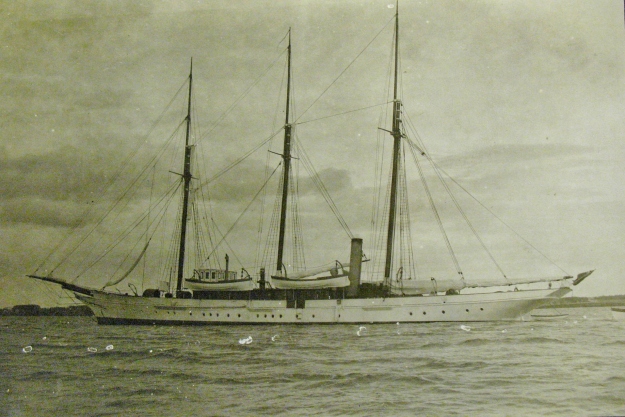
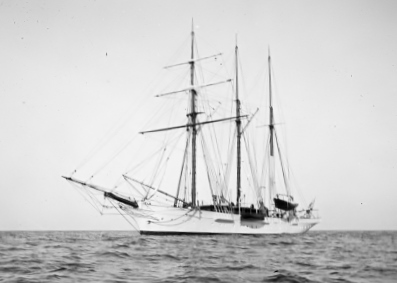
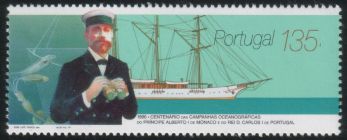

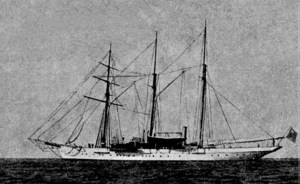
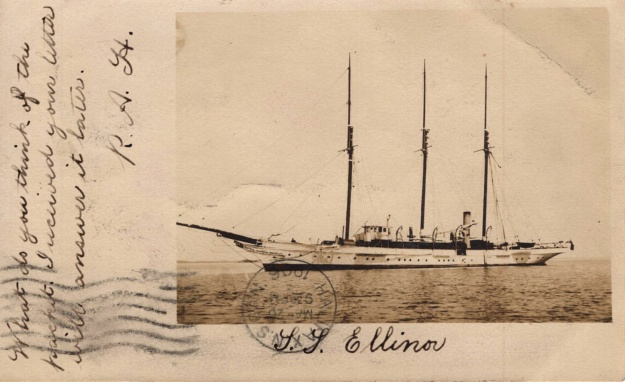 Post script 2019: The Ellinor was the subject of an early postcard (publisher unknown) dating from 1906 which was mailed in Halifax (which may very well have been where the photo was taken). I am indebted to Allison Nelson who is responsible for the very useful
Post script 2019: The Ellinor was the subject of an early postcard (publisher unknown) dating from 1906 which was mailed in Halifax (which may very well have been where the photo was taken). I am indebted to Allison Nelson who is responsible for the very useful